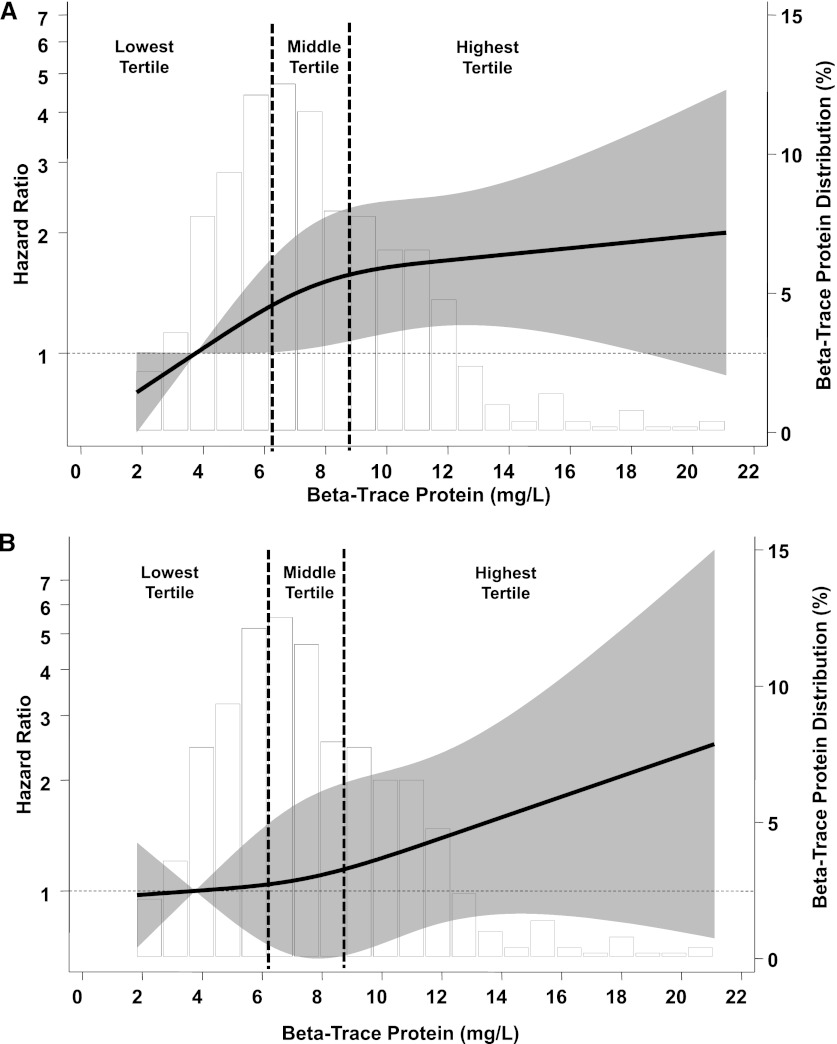Figure 1.
Serum β-trace protein and adjusted risk of death. Adjusted relative hazard of all-cause mortality (A) and cardiovascular disease mortality (B) with serum β-trace protein (BTP) in 503 incident hemodialysis participants of the Choices for Healthy Outcomes in Caring for ESRD (CHOICE) Study. Relative hazard predicted using Cox proportional hazards regression adjusted for demographic characteristics (age, race [white or other], sex, educational status [completed high school or not], marital status [married or not], and employment status [employed or not]) and clinical and treatment factors (smoking history [ever smoked], pulse pressure, body mass index, primary cause of kidney failure [diabetes, hypertension, glomerulonephritis, or other], Index of Coexistent Disease score [zero to three], cardiovascular disease, congestive heart failure, left ventricular hypertrophy, diabetes, and serum albumin). Bars present the distribution of serum BTP. Solid line represents the adjusted hazard ratio of serum BTP with mortality; BTP of 3.8 mg/L (25th percentile of the lowest tertile) is used as the reference point (hazard ratio=1). Gray bands surrounding the solid line represent the 95% confidence interval of the hazard ratios. Vertical dotted lines represent BTP tertiles: lowest tertile (<6.1 mg/L), middle tertile (6.1–8.8 mg/L), and highest tertile (>8.8 mg/L).

